Best AR-15 Muzzle Brakes & Compensators
At the tip of 99% of AR 15s sits some form of threading. That threading is ripe for the addition of a muzzle device. Muzzle devices in the AR 15 world are vast and plentiful like anything else in the AR 15 world. There are even different types of muzzle devices, but today we will focus on two specific performance-enhancing muzzle devices, the compensator, and the brake.
We’ll define what each does, point out some of the best on the market, and even go over a few different considerations when selecting a device. You’ll be a pro on AR compensators and muzzle brakes by the end of this article.
To skip ahead, you’ll find our Best Muzzle Brakes & Compensator list here.
What’s a Compensator?
It’s not a thing insecure dudes buy to make up for their faults. It’s a muzzle device that redirects gas upward to push the muzzle downward. Naturally, when a weapon recoils, it moves back and upwards.
A compensator is a precision-made device with cuts that orient upward, and when the gas reaches these cuts, slots, or dots, the gas takes the path of least resistance which is both upward and forward. The upward-directed gas pushes downward and, by extension, mitigates muzzle rise and improves your control.
What’s a Brake?
The good news is that it’s not something designed to make you slow down. It’s designed to help you go fast. A muzzle brake redirects gas to reduce recoil and make a rifle more manageable. A muzzle brake features a series of side ports and baffles that work to reduce recoil.
How? Well, the gas hits the baffles or ports, and this action creates a braking effect. It effectively pushes forward on your baffles which creates a push forward effect on your rifle. Since recoil is a rearward push, the forward push helps defeat recoil and increase control. Simple, right?
Hybrid Devices
The goals of compensators and muzzle brakes are similar, and one doesn’t negate the benefits of the other. This leads to the development of hybrid devices. These devices mix in the port of compensators and brakes to pull double duty and offer you the best of both worlds.
The Best Muzzle Brakes and Compensators
Now that we know what compensators and muzzle brakes do, let’s talk about what are some of the genre-defining options currently on the market.
Best AR-15 Muzzle Brakes & Compensators
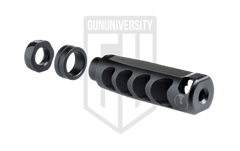 | Editor’s Choice
| Check Price | |
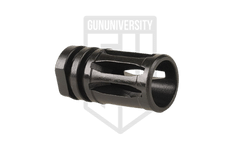 | Best Budget
| Check Price | |
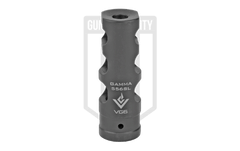 | Best for PCC’s
| Check Price | |
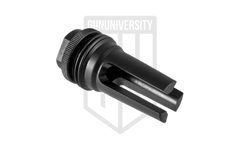 | Best for 300 Blackout
| Check Price | |
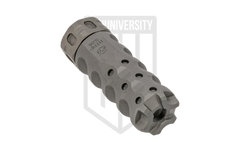 | Best Hybrid
| Check Price | |
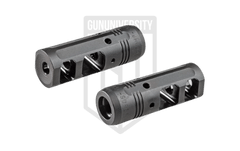 |
| Check Price | |
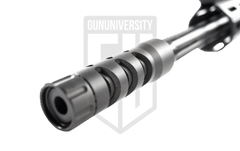 |
| Check Price | |
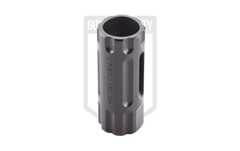 |
| Check Price |
Best AR-15 Muzzle Brakes & Compensators
- Ultradyne Apollo Max
- Standard A2 Bird Cage
- VG6 Gamma 9mm
- SilencerCo Hybrid ASR Muzzle Brake
- Precision Armament Hypertap
- Surefire ProComp Muzzle Brake
- Matador Arms Regulator
- Wilson Combat Q-Comp
Best AR-15 Muzzle Brake & Compensator Reviews
Now that we’ve had an overview of our list, let’s take the time to individually review each item. In this section we’ll be revisiting our specs, speaking about the product, and looking at the pros and cons.
Ultradyne Apollo Max Review
Suppose size isn’t an issue. I’d like to introduce you to one of the most effective muzzle brakes on the market. It’s big, loud, mean, and will reduce recoil substantially. The Ultradyne Apollo Max brings you a premium-grade muzzle brake designed from the ground up to maximize performance.
You’ll be surprised by how much recoil you can tune out of your rifle with the Apollo Max. A standard 5.56 caliber rifle doesn’t deliver a ton of recoil, to begin with, but the Apollo Max takes a good bit of sting out of even that low recoil. The Ultradyne Apollo Max will make your weapon even easier to control, and it works very well on shorter-than-average barrel lengths.
Installation isn’t difficult, and a set of wrench flats made applying torque plenty easy. Beyond that, the included timing nut and design of the Apollo MAx make it very easy to install and properly center. To add to the recoil-reducing features, a pair of compensating slots sit at the tip of the device.
The main downside, in fact, the only downside to the Apollo Max, is the length. It’s almost four inches long and makes a standard carbine dang near the size of an M16. It’s certainly designed more for outdoor use than CQB.
The Apollo Max gives shooters a beefy but very capable muzzle device for increasing your control over the gun. Ultradyne makes some high-quality products that are premium tier gadgets, gizmos, and add-ons.
Ultradyne Apollo Max Pros and Cons
- Very Effective
- Easy to Install
- Made to last
- Fairly Long
Ultradyne Apollo Max Deals
Standard A2 Bird Cage Review
Two many people sleep on the standard A2 birdcage flash suppressor. Yep, I know it’s a flash suppressor, not a compensator or muzzle brake, so why is it on the list? Well, the A2 birdcage system features five slots that are fairly long and work to not only reduce flash but also reduce recoil and keep the gun low and on target.
The A2 flash hider is also the most common AR 15 muzzle device on the planet, and as such, it’s stupid cheap. For less than 20 dollars, you have an effective, durable, and very proven system. The A2 flash hider keeps the muzzle rise down without doing much to increase size. It’s fairly short, compact, and capable.
The A2 flash hider is clearly a proven tool. It’s been in use with the vast majority of soldiers, Marines, Sailors, and Air Men around the world in dozens of different non-permissive environments. The A2 does a fantastic job of reducing flash but also acts as a solid compensator.
The A2 isn’t the highest-performing compensator on the market, but it’s the highest-performing muzzle device you can get for less than 20 bucks. Dedicated compensators will do a better job of reducing muzzle rise than the A2, but they won’t do it for 14 bucks plus shipping.
Standard A2 Bird Cage Pros and Cons
- Affordable
- Easy to Install
- Proven
- There are better-performing devices
Standard A2 Bird Cage Deals
VG6 Gamma 9mm Review
The vast majority of AR 15-style rifles that chamber pistol cartridges are blowback operated. Blowback-operated guns work and work very reliably but impart more recoil than necessary. With that in mind, a good muzzle device goes a long way, and VG6 attacked the problem with purpose-built muzzle devices like the Gamma 9mm.
The VG6 Gamma 9mm combines both the features of the compensator and brake. They found a way to shove both into a device that’s only 1.75 inches long in total. The VG6 Gamma 9mm features four massive side ports for reducing recoil, alongside five small ports for compensation backed by two long ports.
The combination takes a lot of sting out of your average PCC. The reduction in recoil and muzzle rise makes it easy to keep your gun on target and to put repeated shots right where you want them. The short device works well with AR-style 9mm pistols and full-length rifles. It has merits in both tactical application and competitive shooting.
The VG6 delivers in a space that’s sadly often ignored. If you have a 9mm rifle or large format pistol, the VG6 has your six. The Gamma is the most modern option for the PCC user.
VG6 Gamma 9mm Pros and Cons
- Eliminates Muzzle Rise and Recoil
- Short
- Lightweight
- Expensive
VG6 Gamma 9mm Deals
SilencerCo Hybrid ASR Muzzle Brake Review
.300 Blackout might be the most successful alternative rifle round for AR 15-type rifles. Since its inception, it’s been designed for two things, short barrels, and suppressors. As such, it’s wise to consider both when shopping for a muzzle device, and the SilencerCo Hybrid ASR Muzzle brake is a great way to go.
The Hybrid ASR allows you to quickly detach a suppressor to your rifle. The brake itself acts as the mount, and this keeps things simple and easy for running, suppressed or unsuppressed. The SilencerCo Hybrid ASR device offers you the best of both worlds and makes attaching and detaching a suppressor very easy.
The three-port design makes for a very efficient muzzle device. It’s not fancy, but that doesn’t mean it’s not effective. It takes the sting and recoil out of both subsonic and supersonic ammunition quite effectively. It’s also fairly light but is 2.5 inches long overall, and that can be a bit of a headache. However, you are already likely using a short rifle, so it won’t be too bad.
The SilencerCo Hybrid ASR Muzzle Brake also gives you a fairly affordable option to pull double duty as both muzzle brake and QD point for suppressors.
SilencerCo Hybrid ASR Muzzle Brake and Cons
- Allows the Use of Suppressors
- Lightweight
- Easy to Mount
- Somewhat Long
SilencerCo Hybrid ASR Muzzle Brake Deals
Precision Armament Hypertap Review
Why have a device that just does one thing when you can have a device that does both? Hybrid muzzle devices aren’t that uncommon, but the Hypertap doesn’t half-ass two things but masters both. The Hypertap from Precision Armament is a ground-up design that Hypertap describes as such:
“Our proprietary Hybrid Baffle Design combined with advanced Convergent-Divergent port geometry yields an unprecedented recoil reduction of over 84%…” Do I know what that means? No, not really. What I do know is that the Hypertap freaking works. It drives recoil and muzzle down to nearly nothing and makes shooting your 5.56 something more akin to a very loud .22 Magnum.
The Hyertap eats up recoil and muzzle rise at the cost of a lot of noise and quite a few dollars. It’s crazy, but a precision machine piece of steel can affect how your gun handles, but the proof is in the pudding. It comes as a muzzle brake with pilot holes ready to be drilled to unleash its compensator capabilities. Sadly it’s not plug-and-play, but it allows you to tune the brake for your rifle.
The Hypertap is nearly 2.5 inches long and costs almost two hundred bucks, so it’s not a free lunch. However, if you want to experience the most recoil reduction that might be possible, the Hypertap is the way to go.
Precision Armament Hypertap Pros and Cons
- Incredibly effective
- Integrated Timing Nut For Easy Installation
- Tunable
- Have to Drill the Comp Ports Out.
Precision Armament Hypertap Deals
Surefire ProComp Muzzle Brake Review
Surefire is a light company, I know, but that doesn’t mean they don’t produce awesome everything else. Their muzzle devices vary wildly from suppressors and flash hiders to muzzle brakes and compensators. The ProComp is a duty-ready, professional-grade compensator designed for modern troops, cops, and LARPers.
When you need high performance mixed with tank-like durability, then the ProComp is tough to beat. It’s rigid, rugged, and made to last. The ProComp offers you two different-sized ports to increase control and cut recoil down by leaps and bounds. Surefire refers to it as the Impulse Diffusion design, and whatever it is, it works.
The sting from your 5.56 rifle is almost entirely eliminated, and minimal recoil means minimal muzzle movement. That translates into fast and more accurate follow-up shots, and ProComp dominates in that regard. It’s also a device designed for warfighters, so it can take a ton of abuse without complaint.
A set of pilot holes exist that can be drilled out to customize the recoil impulse for each shooter. These ports help reduce muzzle rise, but it’s tough to consider this a true hybrid due to the minimal amount of ports. Either way, drilling them out is optional, and as a muzzle brake, the ProComp is an awesome option.
Surefire ProComp Muzzle Brake Pros and Cons
- Incredibly Durable
- Effective Design Reduces Recoil
- Can be drilled to reduce muzzle rise
- Long and Heavy
Surefire ProComp Muzzle Brake Deals
Matador Arms Regulator Review
Matador Arms is a neat little company doing very neat things in the world of firearms. The Regulator is one of the coolest muzzle devices out there. It’s a mix of both compensator and muzzle brake that also features tool-less adjustments and customization.
The Regulator is huge at 3.6 inches and accommodates three massive side ports and three top ports. The combination delivers a solid and reliable experience for reducing recoil and muzzle rise. Those ports send gas everywhere but keep the gun focused downward and on target.
As the name implies, you get to Regulate the ports. It’s a toolless adjustable system that requires you to rotate the locknut. Each click is a minimal adjustment to the ports. You can run the Regulator fully closed to reduce noise and flash or fully open to have the most effect on recoil.
The design is awesome, easy to use, and available for a wide variety of calibers, including 9mm, 5.56, and .30 caliber. The downside for most of us will be the length and weight. At 3.6 inches and 6.8 ounces, it’s not exactly small. Matador Arms and the Regulator is impressively well-made and ingenious in design.
Matador Arms Regulator Pros and Cons
- Adjustable
- Effective as a Brake and Comp
- Easy to Install
Matador Arms Regulator Deals
Wilson Combat Q-Comp Review
The Wilson Combat Q-Comp is what happens if you take the A2 style flash hider design and make it into a purpose-built compensator. A quick peek shows a similar design with Wilson Combat expanding the ports to better reduce recoil and tame muzzle rise. It’s a simple design and surprisingly affordable from Wilson Combat.
The Q-Comp does have some hybrid-like qualities. The ports are milled close enough to the side and deep enough to create a brake-like effect in reducing recoil. While the design reduces some recoil, it’s mainly a compensator that reduces muzzle rise more than anything else.
At the first trigger pull, I was shocked at how little my reticle moved between shots. It was downright silly how easy it was to control the rifle. Even rapid strings of fire delivered very little movement of the muzzle. It’s quite delightful. On top of that, it’s not overly long or heavy, and it’s well suited for a tactical rifle.
Wilson Combat Q-Comp Pros and Cons
- Effective Compensator
- Affordable
- Compact
- Requires Perfect Indexing
Wilson Combat Q-Comp Deals
Muzzle Brakes & Compensators – Buyers Guide
Now that we’ve got out top compensators and muzzle brakes let’s dive a little deeper into the world of muzzle devices and get into the downsides and factors you need to consider before tossing one on your blaster of choice.
Downsides to Compensators
Compensators might drive recoil downwards, but they don’t do it for free. The main downside of a compensator is the flame flying out of the top in low-light situations. Larger ports direct gas upwards, and sometimes that gas is very bright and can create a degree of blindness. It can certainly leave hot spots in your vision and make it tough to see in the dark.
Compensators also make your firearm a fair bit louder than most. Making a gun louder is tough to do, but compensators do it.
Downsides to Muzzle Brakes
Not only do compensators make guns louder, but so do muzzle brakes. Muzzle brakes add some significant noise to your firearm. In fact, they are definitely worse than compensators in this department. However, the main victims of noise won’t be the shooter, but the shooter next to you at the range will be the primary victim of the gun’s noise.
On top of that, the gas being tossed from the side of the ports can be a hassle for other shooters and can damage nearby walls or objects.
Downsides to Hybrids
Hybrids have all the strengths of muzzle brakes and comps but also all of the downsides. They are loud, bright, and spit gas everywhere. Additionally, hybrids are often longer than standard devices or weaker than standard devices. You start removing more and more metal from a piece of steel, and it’s bound to get structurally weaker. It can be a tough compromise to get the best of both worlds.
Length and Weight
A shared downside to these devices is the fact they can add a few inches and a few ounces to your rifle. In a world where we ride the limit of 16 inches fairly often, the addition of a compensator or muzzle brake can add several inches to your rifle, making it a little less maneuverable. In the weight department, ounces equal pounds, and some of these devices can get a bit obnoxious.
This can put your weapon off balance. Pay attention to the length and width of the device, and be very careful with your selection depending on what you are looking to do with your rifle. A muzzle device designed for competition can be longer and heavier, but a device designed for tactical applications is best left short.
Handguards and Muzzle Devices
In the world of muzzle devices and handguards, you have to be careful with how they interact. If your handguard goes beyond the end of your barrel, your muzzle device might destroy it. Those upward or sideways pointing ports are throwing out some seriously mean and hot gas and will destroy a handguard. If you really want that encapsulated barrel look, you need to turn to a linear compensator or suppressor.
Suppressed or Not
Do you, or are you planning to run a suppressor? If so, you need to be even pickier with your muzzle device. Removing a muzzle device to attach a can will get old quickly. Luckily, numerous companies make muzzle devices that also act as mounting for a suppressor. If you want silence, then this is the way to go. The muzzle devices can pull double duty and be a compensator or muzzle brake.
These muzzle devices act as a constant index point for your suppressor and allow you to rapidly and easily remove and attach the suppressor. These can be fairly efficient devices and are often made by suppressor companies to accommodate specific suppressors.
The Art of Muzzle Devices
A good muzzle device can go a long way in helping you maintain control over your AR 15. These simple, machined pieces of metal can reduce recoil and muzzle rise and make you shoot faster and straighter. It’s honestly rather impressive. Hopefully, you now know the difference between comps and brakes, as well as the upsides and downsides of both devices.
If you have any questions left, feel free to fire them off in the comments section, and we’ll get right back to you.
Recent Posts
December 15, 2025
December 15, 2025
December 12, 2025
December 12, 2025

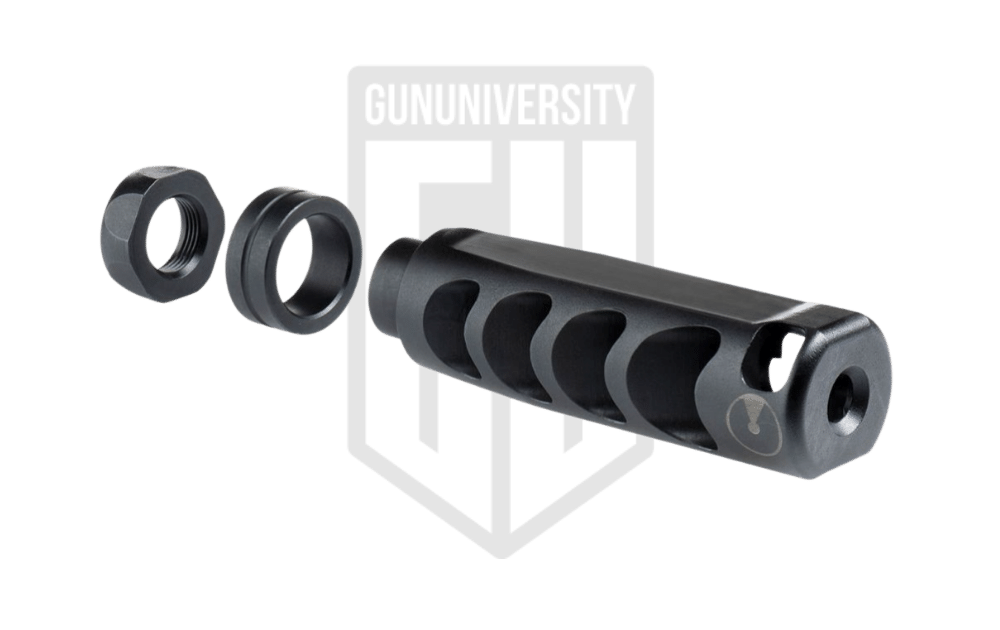
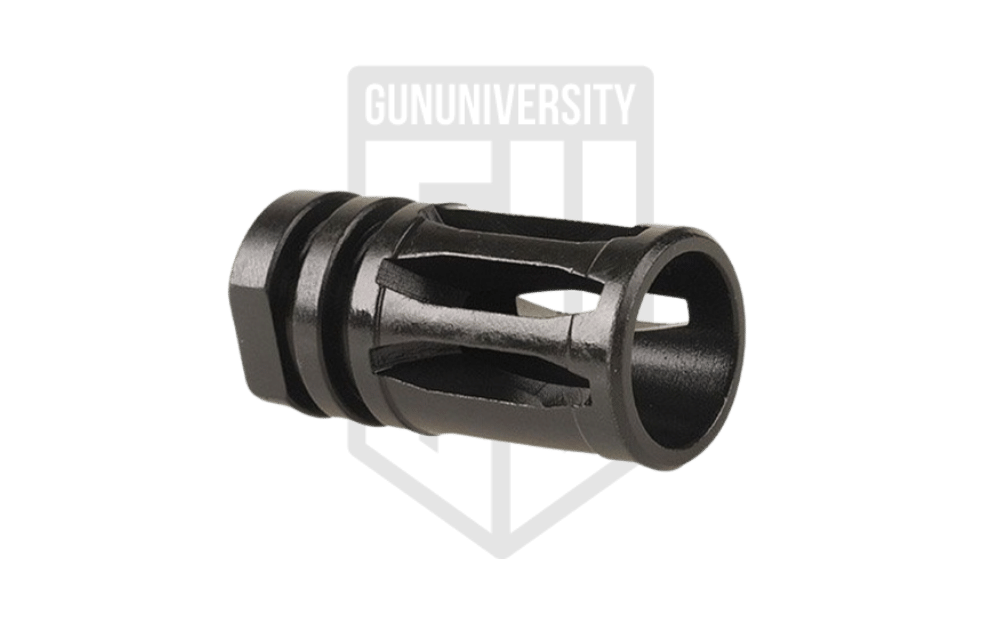
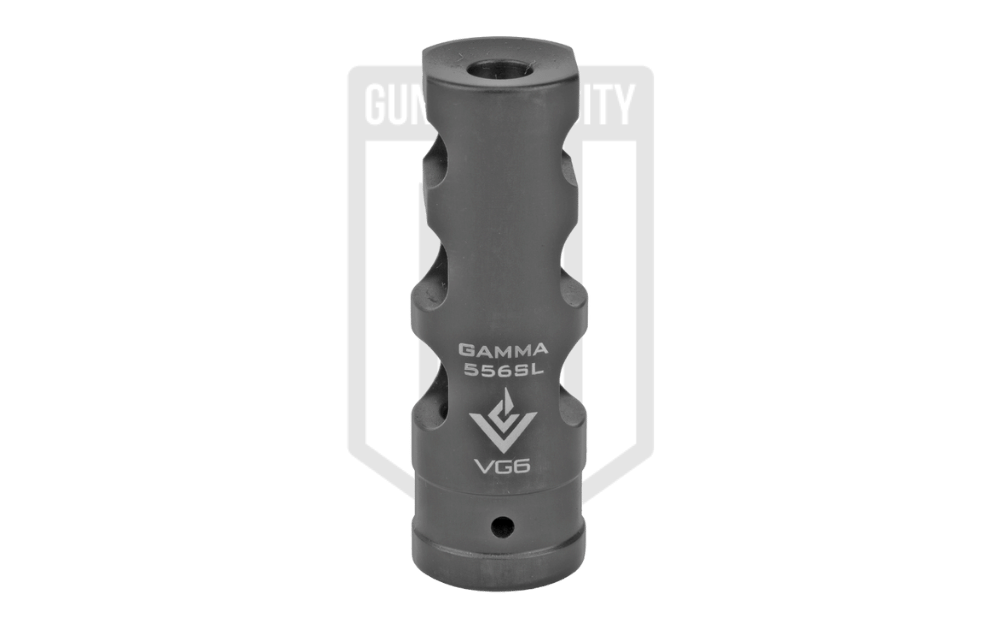
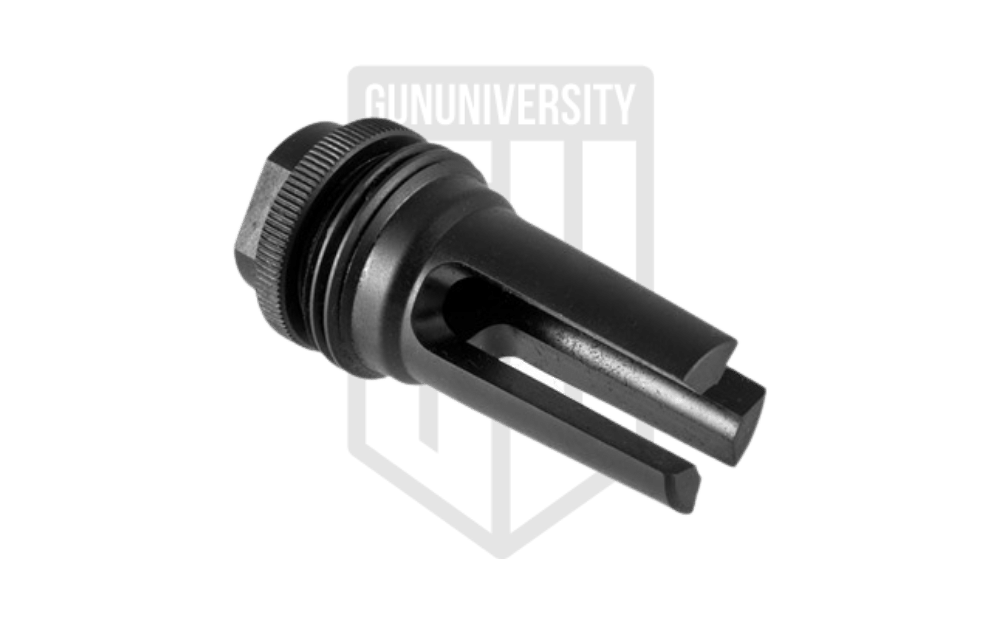
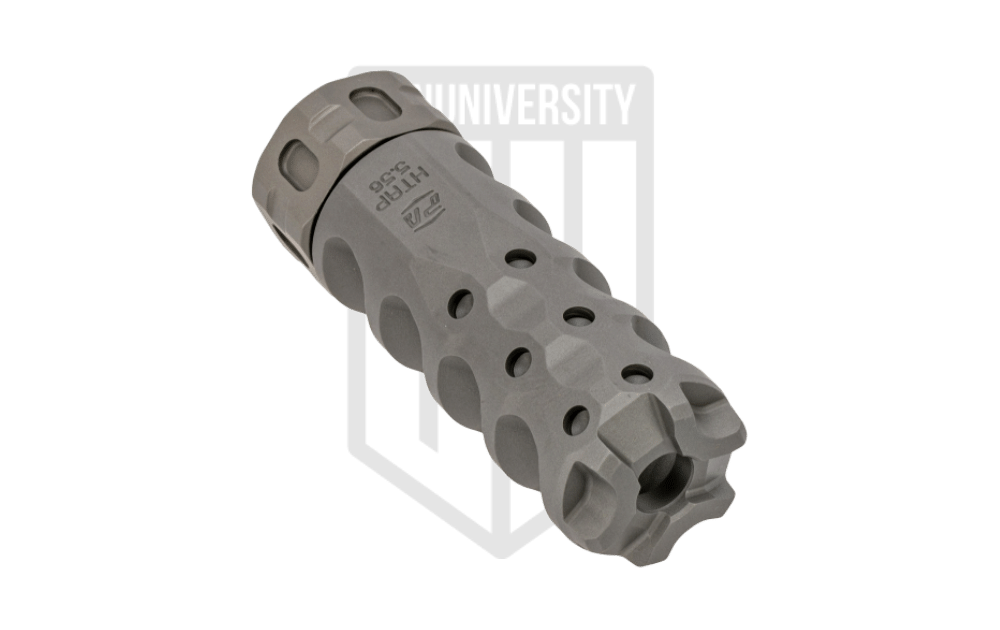
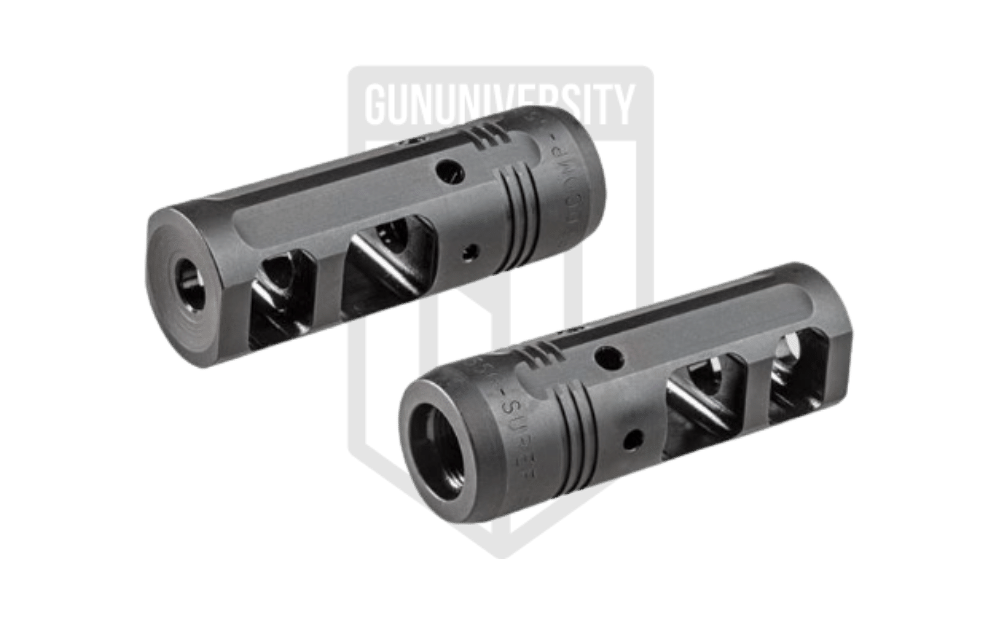
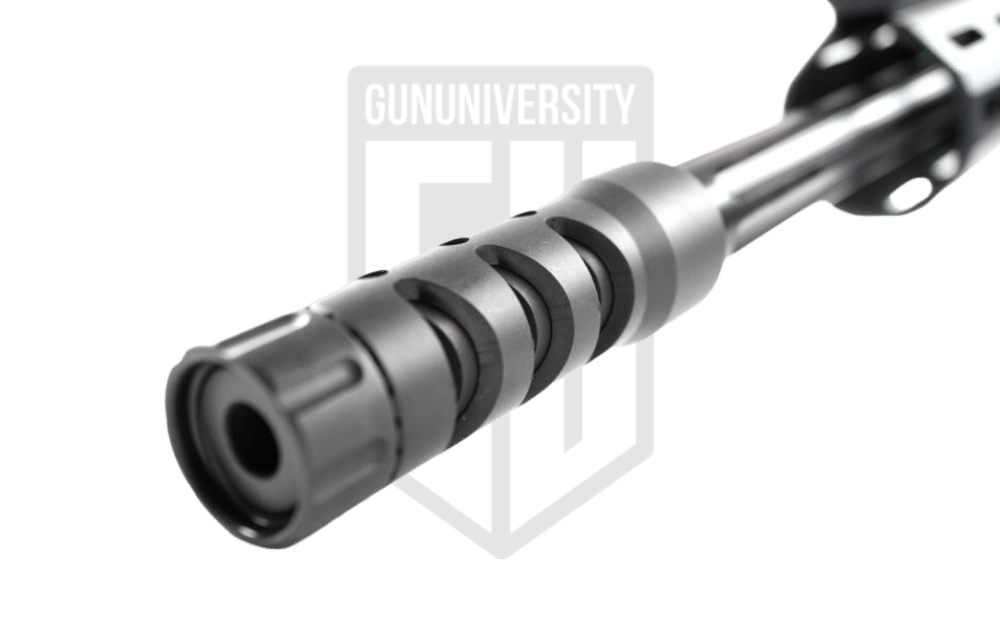
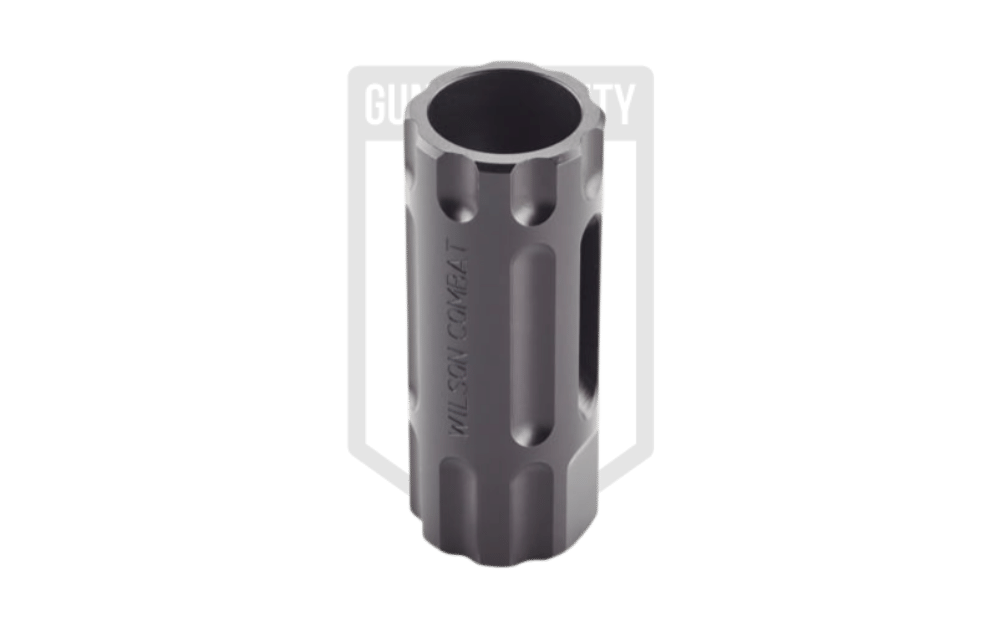
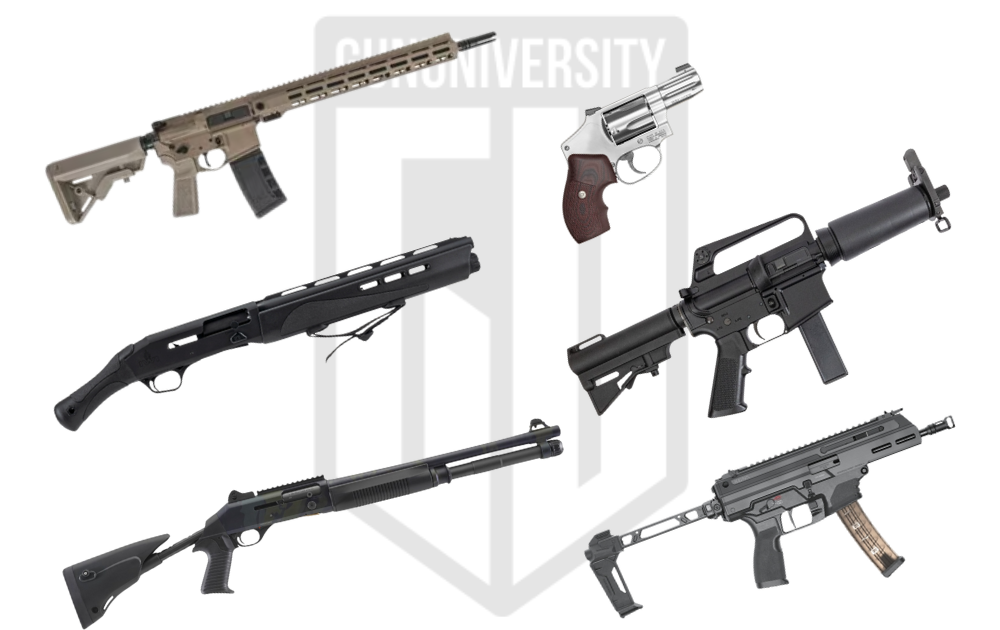

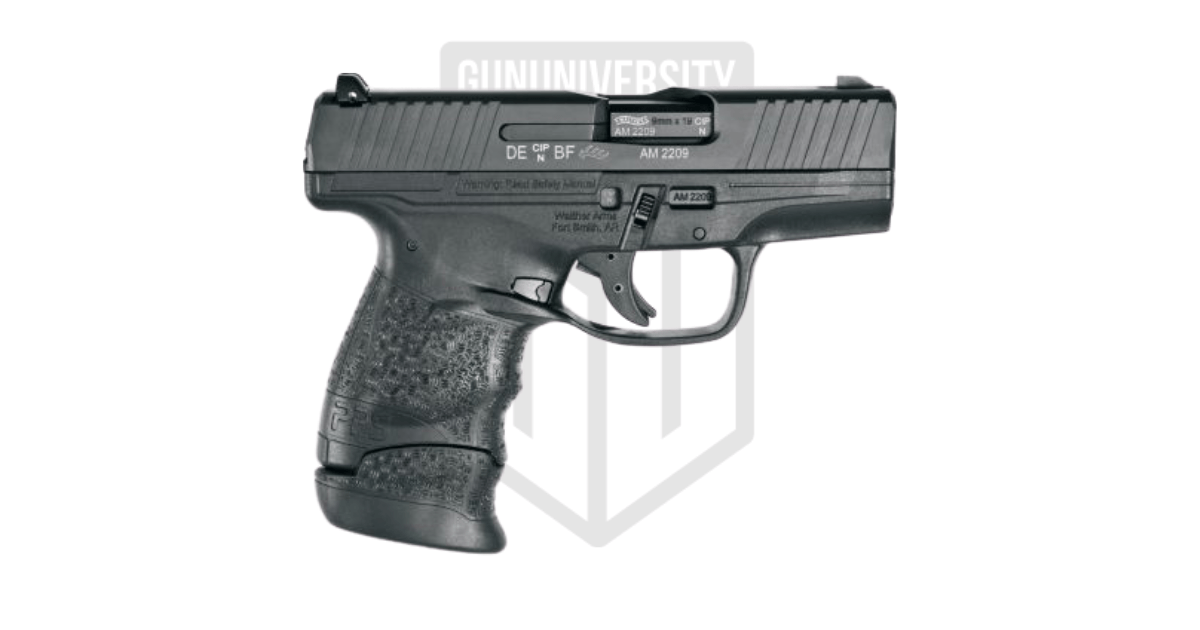
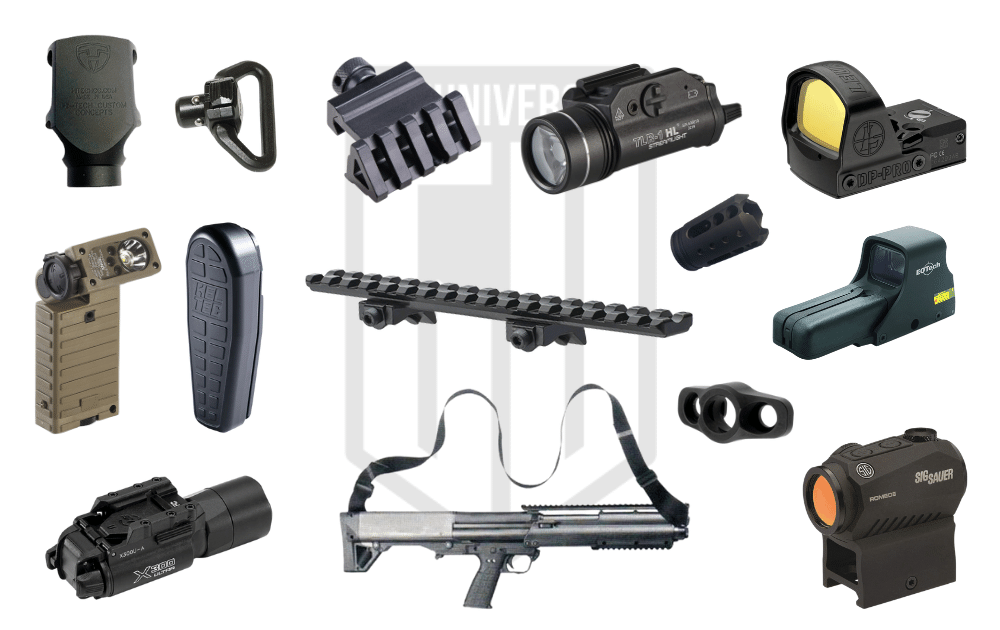
While the article discusses size and length, there is no discussion of accommodation for drill and tap. Permanent mounting on shorter barrel can be a technique to address the long devices.